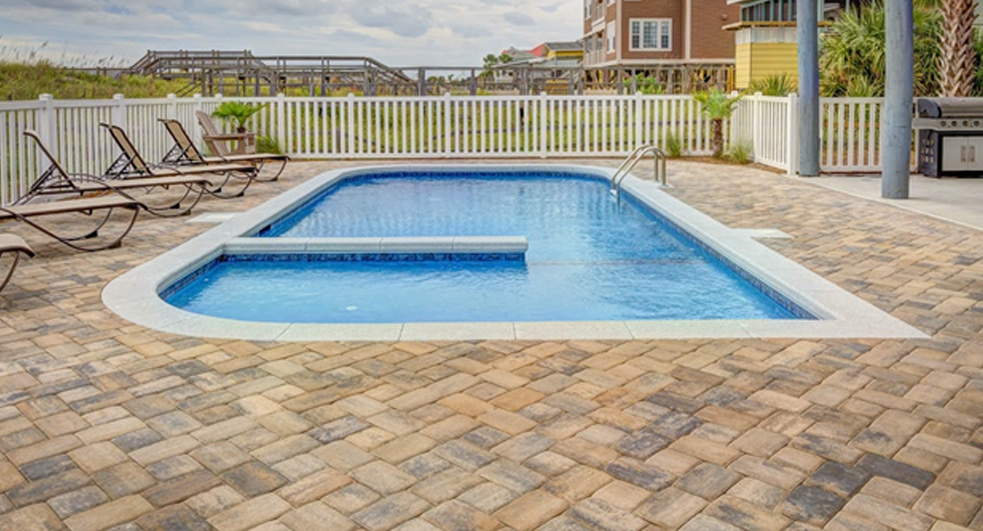Keep notice of the water level.
Either you hire a service or do the upkeep yourself, it is vital to have an eye for leaks in the swimming pool from time to time. Anytime you notice a regular reduction in the water level of the swimming pool, you should ensure that you are not having an issue that needs prompt attention.
Of course, the loss of water in the pool is natural. However, if your water bill has gone up, there should be suspicious of the water leak. Usual water loss includes evaporation and splash-out, which differs from water temperature, wind, humidity, and barometric pressure. But, the situation should not get precarious enough that you add water continuously.
Unfortunately, a swimming pool does not have a piece of equipment similar to a car that can indicate trouble quickly. Thus, you need to check it yourself regularly.
Considerations before conducting a Bucket Testing
- You should not conduct the bucket test while it is raining, as the rain can interfere with results.
- You should not continue the test for over 24 hours. Otherwise, the results could lose its accuracy.
- Note down the number of inches lost in 24 hours. Also, measure the difference between the water loss in the bucket and that from the pool.
- Are you finding the mark outside the bucket lower than the inside? It indicates that there is a leak.
A method to find a leak in the pool – A Bucket Testing

The simplest and quickest way to test for a pool leak is the bucket test. For a test, you should manage to bring a 5-gallon bucket and comply with these instructions. You should avoid conducting a bucket test on a day when the rain is pouring down in your pool.
- Before anything else, you should bring the pool water to its usual level.
- Afterward, put a bucket on one of your steps. Then, fill it with water to such an extent that the bucket level equals the pool level.
- With a black marker, mark the water level both outside and inside the bucket.
- Once done, switch off the pump and the automatic water fill, in case of any.
- Now, you need to wait for the next 24 hours.
- After the wait of 24 hours, mark the new water level inside the bucket. Do it the same on the outside of the bucket, too. This time, you can make a spot on both sides with a red marker.
- Afterward, compare the inside and outside marks. Is the drop from black to red is greater on the bucket’s outside than the inside? It means your pool got a leak.
Found a leak, now?
If you get a suspicion of a leak, you should take assistance from Pool leak detection LLC. We will work it through since we have tech-driven pieces of equipment as well as a great experience. We often fix the issue the same day, or at the minimum possible time, so that you can take a sigh of relief.
Remember that even a slight leak could bring up a storm of a problem, no matter what kind of problem you are facing. Therefore, always take notice of it and take swift action.
The average rate of evaporation
It is usually evaporation if you lose a quarter-inch of water per day. On the other hand, it may indicate a leak if you lose a half-inch per day, though it is not always necessary. The evaporation rate depends on multiple factors, such as sunlight intensity, humidity, barometric pressure wind, and the amount of water used by people. In the summer, the level of evaporation is likely more compared to the winter. You can perform a test anytime you feel a likelihood.
A few causes of pool leaks
A leak could occur for many different reasons. Let’s take a look at a few issues.
Structural cause
Because of the structural damage, structure leaks can take place at any moment in your pool. If you view a crack in the fiberglass or concrete pool, you should start your investigation from the given area, especially if you are losing water.
It is usual for leaks to take place around fixtures such as lights and returns.
Plumbing
Due to the corrosion or movements in the ground, underground leaks can take place. As a result, it damages the underground plumbing or pricking the floor of the pool. You should contact professionals if you suspect such a leak. It needs to take help from professionals to discover a leak underground. Procrastinating to fix the leak can cause further damage to his pool and surrounding parts.
Broken Fittings
Breaks and cracks in the pipe can happen anyplace, but the more likely chance to have it happened is when a meeting of joint connections occurs. It is common in spas as well as pools. The good news is that they are easily fixable if the located place is comfortable.
Rundown
Your pool can spill water for several reasons. Essentially, heat from the sun, wind, and humidity causes water loss in the swimming pool. There are other causes as well, such as cracks or leaks. Though they take time to get found, they are fixable.
The source of a leak could either be pipes, seals, or the pool’s surface. The places where two bodies meet in the swimming pool are especially vulnerable to leaking. A bucket leak detection test will conclude if the pool water loss is because of natural reasons or something else. You can carry out a test by placing a bucket on the steps of your pool and see the changes.




